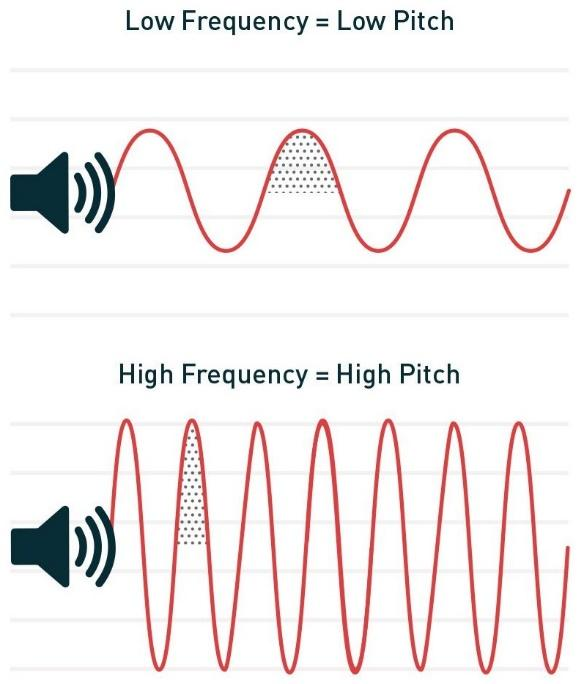Question
Question: How does frequency affect the sound?...
How does frequency affect the sound?
Solution
The higher the pitch of the sound we hear, the higher the frequency waves oscillate. As you can see, sound frequency is governed by how sound waves oscillate as they travel to our ears, compressing and stretching the medium, which in most cases is air.
Complete step-by-step solution:
A frequency sensation is generally referred to as a sound's pitch. A high-frequency sound wave corresponds to a high pitch sound, whereas a low-frequency sound wave corresponds to a low pitch sound. Many people, especially those who have musically trained, are capable of discerning a frequency difference of as little as 2 Hz between two different sounds.
A frequency is the number of times sound waves pass through a given spot in a second. The pitch of a sound is how high or low we perceive it to be. The pitch is higher when the frequency is higher. Frequency is measured in hertz. GHz, or gigahertz, is another unit of measurement for frequencies. We can hear frequencies as high as 20,000 hertz. To summarise, the higher the pitch, the higher the frequency. The pitch decreases as the frequency decreases.
The pitch of the sound we hear will increase as the frequency of the waves increases. When the pitch of a sound is high, it is said to be shrill, and when the pitch is low, it is said to be flat. Whistles, school bells, and other high-frequency or high-pitch noises are examples. Thunder, man's voice, and other low frequency or low pitch sounds are examples.

Additional information:
Human (and another animal) ears are sensitive detectors capable of sensing air pressure variations that impact the eardrum. Later in this course, the physics of the ear's detection abilities will be examined. For the time being, it is adequate to state that the human ear can perceive sound waves with frequencies ranging from around 20 Hz to 20,000 Hz. Infrasound is any sound with a frequency below the audible range of hearing (less than 20 Hz), while ultrasound is any sound with a frequency above the audible range of hearing (greater than 20,000 Hz).
Note:
Sounds with a Low Frequency: Low-frequency noises, often known as infrasound, are sound waves that have a frequency lower than the lower limit of audibility (which is generally at about 20 Hz). Low-frequency noises are those with a frequency of less than 500 hertz.
Severe weather, waves, avalanches, earthquakes, whales, elephants, hippos, and giraffes are all examples of low-frequency sounds.
Sounds with a High Frequency: A high-frequency sound is defined as one that has a frequency of 2000 Hz or above. Whistles, mosquitoes, computers, screams, squeaks, glass shattering, and nails on a chalkboard are just a few examples.
